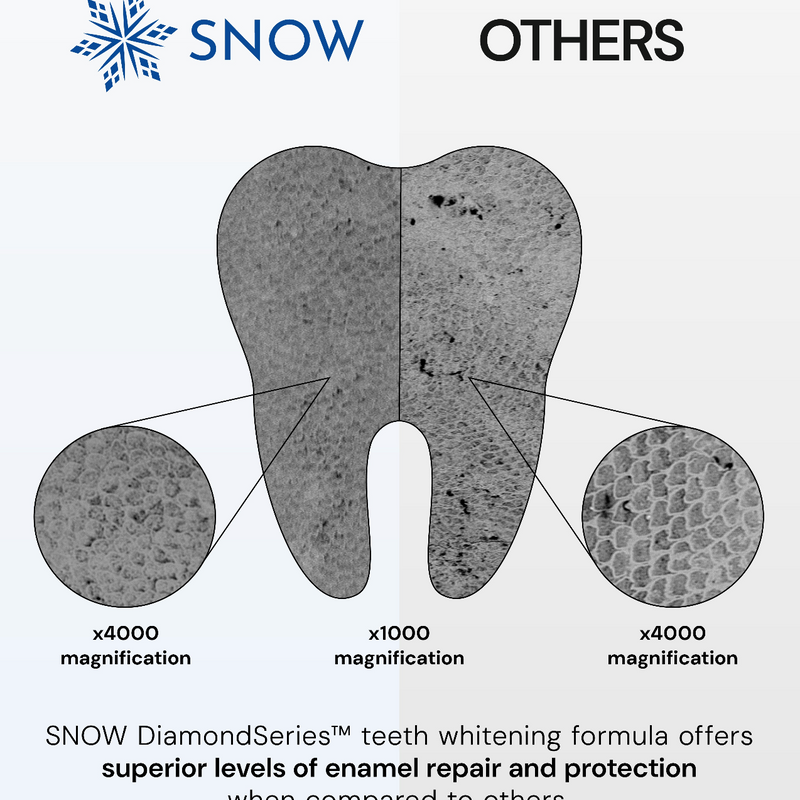If you've ever experienced a painful toothache, you likely associated it with a cavity – but did you know there are several other symptoms of tooth decay? There are actually several signs of cavities, but a common misconception is that only the worst should be taken seriously. Understanding these various symptoms can help you catch cavities in their early stages and often leads to prevention.
Keep reading to learn more about tooth decay, how to treat it, and how to prevent cavities from forming.
What is a cavity?
Cavities, also called dental caries or tooth decay, are tiny openings or holes that form on the hard surfaces of teeth due to bacteria. Tooth decay can affect the outer layer of a tooth, called the tooth enamel, or the more sensitive inner layer, called dentin. Cavities often develop gradually and without noticeable symptoms, making them difficult to recognize without visiting a dentist.
How do cavities develop?
Everyone has billions of bacteria in their mouth. Some are helpful, while others are harmful, such as the ones that cause tooth decay. Essentially, these "bad" bacteria turn the sugars in food into acid, contributing to a destructive substance known as plaque. Dental plaque is a sticky material composed of saliva, bacteria, acid, and food particles. Unless it is brushed away, plaque quickly accumulates and slowly eats away at the tooth enamel.
Tooth decay may be stopped at this stage with good oral hygiene. However, if the tooth decay process is allowed to continue, the enamel becomes further weakened and destroyed, eventually forming a cavity. At this point, the damage to a tooth is permanent and can only be treated by a dentist.
Risk factors for cavities
Anyone with teeth can develop cavities, including babies. However, the following factors may increase your risk.
Poor Oral Hygiene
Poor oral hygiene, such as failing to brush your teeth or floss regularly, often leads to cavities. It's also important to clean or rinse your teeth shortly after eating or drinking, as plaque forms quickly after teeth are exposed to sugar and carbohydrates. Without brushing it away, that plaque can damage the tooth enamel, leading to the first stages of decay.
Tooth Location
Cavities most often form in the back teeth, called the molars and premolars. These teeth are more susceptible to decay because they have many pits, grooves, and crevices that can collect plaque and food particles. Consequently, your back teeth are much more challenging to keep clean than your easy-to-reach front teeth.
Excess Sugary or Sticky Foods and Drinks
Foods that tend to cling or stick to your teeth for long periods, including ice cream, honey, candies, soda, and chips, are more likely to cause cavities than foods that can be easily washed away with water or saliva. Additionally, a high-sugar diet is a leading cause of tooth decay. This is because the bacteria in your mouth feed on sugary, starchy foods and convert them into acids that damage enamel.
Frequent Sipping or Snacking
Steadily sipping sugary drinks or eating sweet snacks throughout the day can give bacteria more fuel to produce acids. In addition, this steady supply of sugar helps create a continual acid bath over the teeth, making you more likely to experience tooth decay.
Not Getting Enough Fluoride
Fluoride is a naturally occurring mineral that helps prevent cavities. It can even reverse tooth decay in its earliest stages. Because of its oral health benefits, fluoride is often added to public water supplies. It's also a common ingredient in many over-the-counter toothpaste and mouthwash brands. Additionally, your dentist may recommend professional fluoride treatments after your regular cleanings to ensure optimal oral health.
Dry Mouth
Dry mouth is a condition caused by inadequate saliva production, which helps prevent tooth decay by washing away plaque and food particles from your teeth. Certain substances found in saliva can also help protect the teeth by countering the acid produced by harmful bacteria.
What are the symptoms of a cavity?
The symptoms of tooth decay vary widely, depending on its extent and location. In fact, in the beginning stages of a cavity, you may not have any symptoms at all. And since many cavities don't cause pain at first, it may be difficult to recognize something is wrong. However, as the decay becomes more extensive, you will likely experience irritating signs and symptoms, such as:
- A toothache or any tooth pain that occurs with no apparent cause
- Sensitivity, especially to hot and cold foods or drinks
- Visible holes or pits in the teeth
- Brown, black, or white stains on the surface of a tooth
- Pain when chewing or biting down
- Redness around or inside the mouth
- Bad breath or a bad taste in the mouth
- Bleeding gums
- Facial swelling
How common are cavities?
Finding out that you have a cavity may come as a shock, especially if you follow a good oral hygiene routine. However, tooth decay is one of the most common health problems in the world. According to the Centers for Disease Control and Prevention (CDC), about 90% of adults aged 20 and older have had at least one cavity in their lifetime, and 1 in 4 adults aged 20 to 64 currently has at least one untreated cavity.
Although they occur more frequently in children, teenagers, and older adults, people of all ages and backgrounds get cavities. The important thing to remember is that catching them early on is the key to quick and simple treatment.
How is a cavity diagnosed?
Many dental issues, even the deepest cavities, can develop without any pain or obvious symptoms. That's why it's essential to visit a dentist for regular exams and cleanings – even when your teeth feel fine.
When you visit the dentist for your biannual checkup, they will use various techniques to examine your teeth and gums. Sometimes, your dentist can detect tooth decay by probing your teeth and looking for soft spots, which may indicate a cavity.
Still, some cavities aren't visible from an oral exam alone. So, dental x-rays are necessary and typically recommended once per year or whenever tooth decay is suspected. X-rays reveal cavities before they're visible and can also show the extent of the decay so your dentist can deliver adequate treatment.
Complications from cavities
Cavities and tooth decay are so common that many people tend to ignore them and put off their treatment. A cavity may seem like no big deal, but it can have lasting complications and should be taken seriously.
When tooth decay is left untreated for too long, long-term problems can result, including:
- Lasting pain
- Tooth abscess
- Swelling or pus around teeth
- Damaged or broken teeth
- Problems chewing
- Tooth loss
Treatment options for a cavity
The sooner you seek professional dental care for a cavity, the better your chances of reversing the decay and preventing its progression. Your treatment options will depend on your cavity's severity and your personal situation. The most common treatment options for tooth decay are:
Fillings
Dental fillings, also called dental restorations, are the most likely treatment your dentist will recommend for a routine cavity. Once the decay has progressed beyond its earliest stage and a hole forms in the tooth, dentists need to drill out the decayed tooth material and then fill the hole with a substance, such as gold, silver, or a tooth-colored composite resin.
Root Canals
A root canal is a treatment performed to save a badly damaged or infected tooth to prevent an extraction. If your tooth's inner root or pulp is dead or injured in a way that can't be repaired, you may need a root canal. Root canal therapy has a bad reputation, but it's actually not much more uncomfortable than a regular filling.
During the procedure, your dentist will remove the nerve, blood vessels, tissue, and any decayed portions of the tooth. Then, they will replace the roots and pulp with a sealing material. Medication is also sometimes put into the root canal to alleviate any bacterial infection. Finally, you'll likely require a crown made of gold or porcelain to cover the tooth and protect it from further damage.
Tooth Extractions
Some cavities are so severe that the tooth can no longer be restored. If a root canal isn't possible, your dentist may need to extract the tooth. Unfortunately, tooth extraction leaves a gap in your smile, allowing your other teeth to shift. For this reason, it's recommended that you consider getting a bridge or dental implant to replace the tooth and prevent any changes to your appearance.
How can I prevent cavities?
Tooth decay is a common dental problem, but there are ways of preventing cavities. Ask your dentist which tips are best for you:
- Brush your teeth with a fluoride toothpaste at least twice per day
- Floss daily to get rid of food and plaque between your teeth
- Visit the dentist twice per year for regular dental checkups and cleanings
- Cut back on sticky, acidic, and sugary foods and drinks
- Consider professional fluoride treatments
- Limit snacking and sipping
Frequently Asked Questions
Can a cavity heal on its own?
Unless a cavity is in its beginning stages, it cannot heal on its own, especially if it has already broken through to the inner dentin. Therefore, once a tooth has a cavity, only a dentist can treat it.
How do you fix a cavity?
Treatment for a cavity depends on its severity and location. Fillings are the most common treatment option when decay has progressed beyond the earliest stage.
Is a cavity serious?
Tooth decay varies significantly in severity. However, untreated cavities can eventually destroy your tooth and cause more serious complications, such as an abscess or severe infection that gets into your bloodstream, which can be life-threatening.
How do you know if you have a cavity?
Some of the most apparent signs of a cavity are pain, sensitivity, brown spots, and visible holes in the teeth. However, it's also very common to have no symptoms at all. Because of this, it's essential to visit your dentist regularly for thorough oral exams.
Summary
Cavities are common dental issues that affect up to 90% of the population. However, it may be difficult to realize that you have one. Common symptoms of tooth decay include pain, sensitivity, and visible holes in the teeth. But, many people don't experience any symptoms at all. You can reduce your risk of developing cavities by practicing a good oral hygiene routine, including brushing and flossing regularly, limiting sugary snacks and drinks, and visiting the dentist twice yearly for a professional cleaning and oral exam.



























